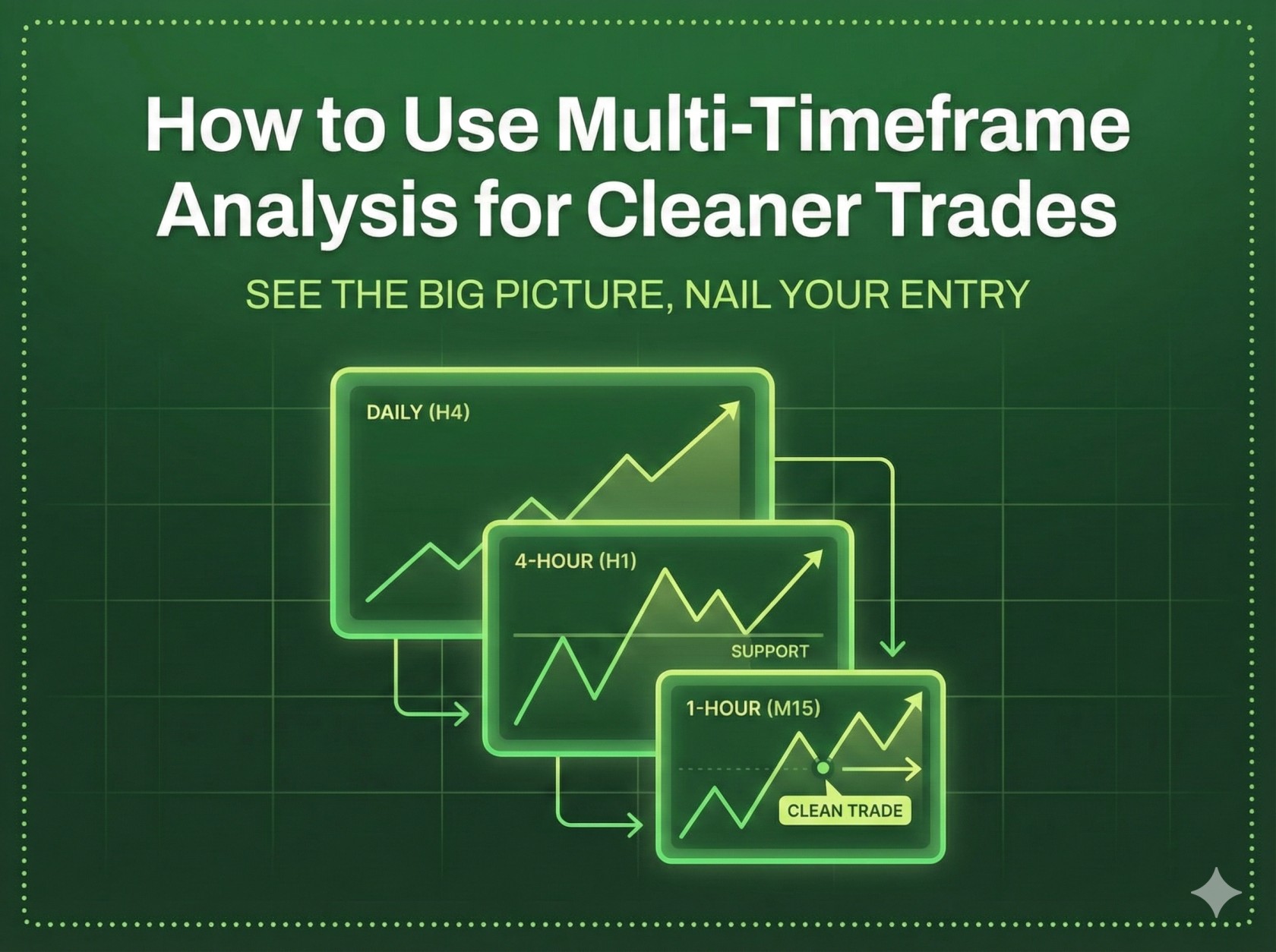Doing Less to Make More: Trading Lessons on Patience
Kev’s trading recap shows why managing trades on the right timeframe is key to profits. Learn how to avoid chop and do less to make more.

Trading is rarely about how many trades you take in a day—it’s about the quality of those trades and how well you manage them. In my latest trading recap, he breaks down a green day that still left plenty of money on the table, proving that even profitable sessions have lessons to teach. The focus this time? How sticking to the right timeframe can make or break your results.
Below is a deep dive into the key takeaways from my session, along with actionable lessons you can apply in your own trading.
A Green Day With Missed Potential
Kev started the day strong, noting that the market has been heating up again. Despite finishing green, he admitted to leaving “a lot of money on the table.” The reason wasn’t bad setups—it was execution.
Markets had been choppy, and that choppiness created small timeframe anxiety. Watching trades too closely on the one-minute chart led to premature exits and smaller profits than the setups deserved.
I think my reminder to traders is this:
“Doing less will make you more.”
By overmanaging trades on the wrong timeframe, you risk cutting winners short and taking unnecessary losses.
Trade Breakdown #1: KAVL and the One-Minute Setup
My first highlight was KAVL, where I caught a clean move over VWAP. The setup originated on the one-minute chart:
- Price pushed over VWAP.
- Pulled back into a clean one-minute consolidation.
- Risk was defined off the low.
- The stock legged back into previous highs.
It was a textbook one-minute play, and I managed it accordingly. While the profits were solid, the decision to manage based on the setup’s origin timeframe was the key. If the setup was found on the one-minute, you should also manage it there—not jump between larger frames that don’t align with your thesis.
Trade Breakdown #2: PALI and the Daily/One-Minute Confluence
Next up was PALI, the main star of the session. I nailed the entry at the lows—around the $1 mark—using confluence from the daily chart’s 200-day moving average and previous highs. From there, PALI ripped.
- Entry: $1 off the 200 MA and daily support.
- Initial risk: $0.97.
- Move: From $1 to $1.16+ at the open.
This was another one-minute setup, and I executed it beautifully. But later in the day, when the play transitioned into a five-minute setup, I made the mistake of continuing to manage it on the one-minute.
That shift created false signals. Noise from the smaller timeframe spooked him into taking profits too soon. In hindsight, the five-minute chart held strong with higher lows and no reason to exit.
The result? A profitable trade, but far less than what the setup could have produced.
The Core Lesson: Respect the Origin of the Setup
The recurring theme in my recap is that the timeframe where the setup originates should be the timeframe you manage on.
- One-minute setups → Enter and manage on the one-minute.
- Five-minute setups → Trust the five-minute for trade management, even if the one-minute looks noisy.
- Daily setups (swings) → Don’t cut trades based on intraday candles.
Switching frames mid-trade only creates doubt, false signals, and premature exits.
As I put it simply:
“Wherever the thesis is rooted from, the origin of that thesis is where you should be managing off of.”
Chop and Overtrading: The Hidden Profit Killer
Another point I emphasized is how chop eats away at profits. After scoring a big win, it’s tempting to re-enter on minor signals. But if the setup isn’t there on the original timeframe, those re-entries often turn into small losses that offset earlier gains.
On both PALI and HCTI, this happened:
- I took beautiful early trades.
- Then re-entered later based on one-minute noise.
- The chop caused stop-outs and gave profits back.
The lesson: sometimes the most profitable move is to do nothing after a big win.
Trade Breakdown #3: HCTI and the “Chop Show”
HCTI was another ticker I traded, but this one was messy from the start. Unlike PALI, which offered clear setups, HCTI was choppy across all timeframes.
- A few small wins from one-minute scalps.
- Quick exits to limit risk when momentum stalled.
- Some small losses on curls that never followed through.
The main takeaway? Not every stock will give clean opportunities. Even green trades can feel like a grind when the price action is unpredictable.
My discipline in cutting trades quickly helped avoid bigger losses, but the overall experience reinforced his belief: focus on setups that align cleanly with their timeframe origin.
Manage Emotions in Real Time
One of the most relatable aspects of my recap is my honesty about how emotions creep in. Even on a green day, I felt hesitation from the recent chop, and that hesitation made me second-guess solid trades. I cut positions early because I didn’t want to give back profits. I let the one-minute chart exaggerate noise and create unnecessary anxiety.
This is where trading psychology intersects with technical skill. Even experienced traders battle these impulses. The difference is recognizing them and adjusting.
Key Trading Lessons From the Recap
Here are the major takeaways distilled from Kev’s session:
- Green isn’t always good enough. Don’t settle for “a win is a win.” Review trades critically to see what you could improve.
- The timeframe defines the trade. Manage on the timeframe where your setup originates. Don’t let smaller frames push you around.
- Noise creates losses. The one-minute chart has value for entries, but not always for trade management.
- Do less to make more. Overtrading and chasing chop erode profits. Take the clean setups and step away.
- Chop is the enemy. If the stock isn’t giving clear signals on your chosen timeframe, skip it.
- Journal everything. Tracking trades, wins, and mistakes is the only way to consistently improve.
Final Thoughts: Quality Over Quantity
My recap should serve as a reminder that trading isn’t just about making money—it’s about making the most of the opportunities you take. A green day can still be a disappointing day if you mismanage your setups.
By respecting the timeframe origin, avoiding chop, and trading with patience, you can stop leaving money on the table and start compounding consistent gains.
And remember: sometimes, the best trade is the one you don’t take.
.webp)


